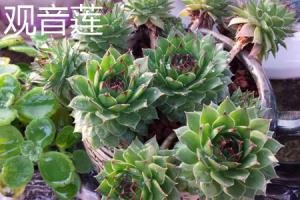How Big Do Plum Tomato Plants Get?
Plum tomatoes are a popular variety of tomato for making sauces and pastes due to their meaty texture and low water content. As with all tomato plants, plum tomato plants come in different sizes depending on the growing conditions and variety. In this article, we will explore the factors that influence the size of plum tomato plants and what to expect when growing them in your garden.
Variety of Plum Tomato Plants
Plum tomatoes come in different varieties, each with varying sizes and shapes. The most common variety is the Roma tomato, which is small and oval-shaped. Other popular varieties include San Marzano, Amish Paste, and Juliet. San Marzano tomatoes are elongated, while Amish Paste tomatoes are more round. Juliet tomatoes are small, pear-shaped, and great for snacking.
When choosing a variety of plum tomato to grow, ensure that you research the size of the plant before you plant them. This will help you determine how much space you need in your garden bed or pot and how much support it will need as it grows.
Growing Conditions
Tomato plants grow best in warm and sunny conditions, with temperatures between 65 to 85 degrees Fahrenheit. They also prefer well-drained, fertile soil with a pH balance between 6.0 to 6.8. When grown in optimal conditions, plum tomato plants can grow up to 6 feet tall and 3 feet wide.
The size of the plant is also influenced by the amount of water it receives. Tomato plants require consistent moisture, but not too much or too little. Overwatering can cause root rot, which can affect the plant's size and yield. Fertilizing the plant with nitrogen-rich fertilizer can also affect the size of the plant, but too much nitrogen can lead to large foliage at the expense of fruit.
Supporting the Plum Tomato Plant
As mentioned earlier, the size of the plum tomato plant depends on the variety and growing conditions. However, regardless of the size, it is essential to provide support to the plant to promote healthy growth and prevent breakage.
One common method of supporting tomato plants is by using a cage. A cage made of wire or stakes can be placed around the plant and secured into the ground. As the plant grows taller, it can be tied to the support with twine or clips. This helps to prevent the plant from falling over or collapsing under the weight of the fruit.
Harvesting Plum Tomatoes
The size of plum tomato plants also determines the yield of fruit. Smaller plants may produce fewer fruit compared to larger plants. However, regardless of the size, it is essential to know when to harvest the fruit.
Plum tomatoes are usually ready to harvest between 75 to 85 days after planting. The fruit should be firm, with a deep red color and slightly soft when squeezed. If left on the vine for too long, the fruit may become overripe and may not be suitable for making sauce or paste.
Conclusion
In conclusion, the size of plum tomato plants depends on the variety and growing conditions. Common varieties include Roma, San Marzano, Amish Paste, and Juliet. Plum tomato plants grow best in warm and sunny conditions and require consistent moisture and well-drained, fertile soil. Providing support to the plant is essential to prevent breakage and promote healthy growth. Understanding when to harvest the fruit is also necessary to ensure the best quality of the harvest. With proper care and attention, plum tomato plants can yield a bountiful harvest and add a delicious flavor to your favorite sauce or paste recipe!

 how many times do yo...
how many times do yo... how many planted tre...
how many planted tre... how many pine trees ...
how many pine trees ... how many pecan trees...
how many pecan trees... how many plants comp...
how many plants comp... how many plants can ...
how many plants can ... how many plants and ...
how many plants and ... how many pepper plan...
how many pepper plan...

































